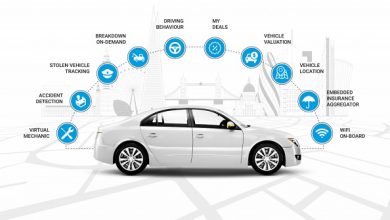Telematics, the way forward in insurance
The advent of technology has enabled the possibility of hyper-localization and hyper-targetingof specific audiences in terms of messaging, segmentation, and serviceability. Telematics is an enabler which provides the same opportunity in Motor Insurance ecosystem.

It’s a potent tool that helps insurance companies track, assess and modulate offerings and hyper-target underwriting. It brings about laser-sharp focus, fair pricing, and truly offers what the customer requires. Each car owner and driver therefore becomes an ecosystem, a market and customer segment onto themselves.
Across the globe, several insurance companies have brought forth differing levels of maturity in terms of offering true customization with reference to motor insurance. However, as is the case with each early-stage technology, telematics implementation in India is no exception. There could be couple of challenges in its implementation, but the advantages offered by this technology are far more.
To analyse the advantages we will have to evaluate the current scenario of motor insurance in India.
Motor Insurance in India has always been an enforced requirement and motor insurance premium has been a function of the make, model and location of the vehicle.Various other parameters , which may be responsible for the upkeep and maintenance of the car and its condition, has been seldom considered, such as how frequently the car is driven, what distance is it driven at a stretch/during a day, what terrain is it driven on – within city or intercity, is it driven by night or by day, how safely is it driven and maybe more. These factors can directly result in a more meaningful risk assessment and pricing mechanism.
In the current scheme of things in India, people who are driving less and/or driving safer in their self-owned car are also paying the same premium as those people who are driving more and may be in riskier situations/fashion/timings.

As a starting point, it can be safely assumed that people who drive fewer number of kilometres are in a way cross-subsidizing the insurance premium for those people who drive higher number of kilometres.Also, people who have safe driving behaviour are subsidizing the insurance premium for the people with bad driving behaviour. Telematics in insurance can help eradicate this anomaly.
Telematics based insurance helps in the real-time monitoring of the vehicle and the driver data along with focused analyses and reports.
To successfully function—the current technologies that are usually in the offering involve
- A black box wired to the car’s electronics and hidden somewhere in the vehicle
- A self-installed device which is generally plugged into the vehicles on-board diagnostic port (OBD)
- Application installed in the Smart phone
Once the device is installed in the vehicle, the data from the device are then analysed and key attributes are then derived such as
- Location
- Speed
- Distance travelled
- Length of time driven for
- Time of the day journey took place
- Accelerations & Decelerations both longitudinally and laterally
- Harsh accelerations, braking or swerving events
- Crashes
These set of data can be used to evaluate the insurance policy premium amount, as well as give timely and accurate information when an accident occur. This can help the insurer to record quality ‘first notification of loss information’ (FNOL) and understand liability as well as challenge potentially fraudulent claims.
Telematics can serve as the platform for usage based insurance Pay as You Drive (PAYD)insurance, as also Pay How You Drive (PHYD) insurance.
Pay as You Drive (PAYD) product is a usage based product in which premium depends on how much vehicle is driven over a specified period. This is considered for calculation of insurance premium. Pay-As-You-Drive pricing requires verified mileage data.
PAYD insurance can enable drivers to experience substantial savings on their car insurance by paying premiums solely based on how much they drive.
Pay How You Drive (PHYD) product is a user behaviour based product in which premium depends on how safely a vehicle is driven. It uses GPS technology to measure how a vehicle is being driven – insurers then use this information to make judgments about driving performance. Driving performance is quantified as ‘Driving Score’ which is defined in terms of speed, road used, time of driving, braking, cornering etc. Driving Score influences final premium charged which may be revised regularly at predetermined intervals. ‘Safe’ drivers will usually benefit from lower premiums than ‘less safe’ drivers.
PHYD system provides a genuine opportunity for users to improve their driving safety and reduce the cost of their cover by proving themselves to be responsible drivers.
Telematics based Insurance will be a lucrative service offering for the consumers and would be instrumental in increasing the renewal rate, since customers will benefit from this value proposition.
It promises to bring about not only an economic benefit, but also in that of the mindset. Culturally it makes insurance viable to purchase beyond the compliance norms. It becomes a valued, pull-based service that customers are likely to bring into their budgets themselves.
If telematics success factors are activated, there would be an immense value generation that will allow lower premiums to co-exist with profitability. The advent of Telematics allows the insurance industry to take its first steps into Insurance 2.0.
A world where real time intelligence through tracking and unbridled data rapidly adjust themselves to attune to risk as it happens.



